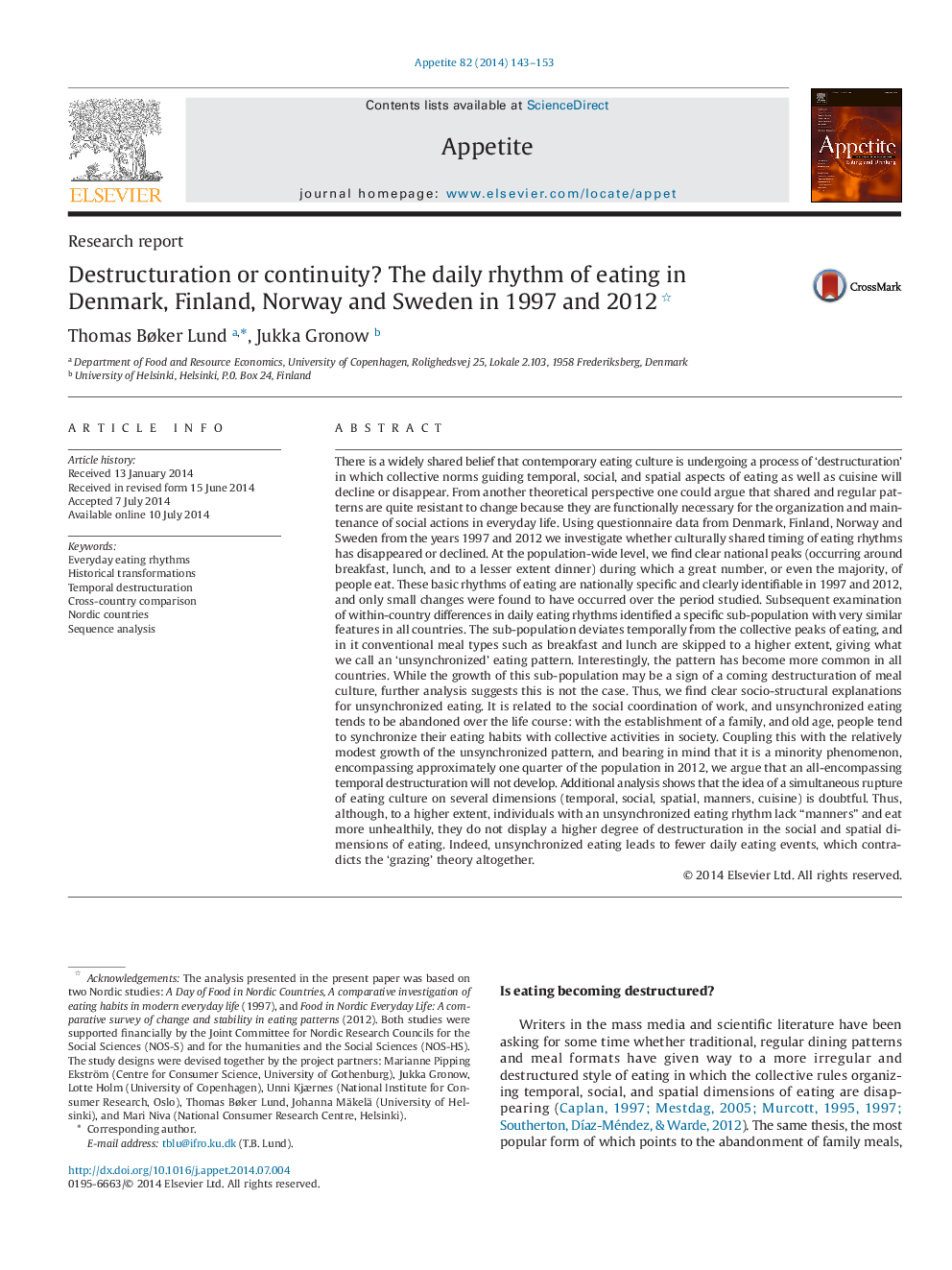| کد مقاله | کد نشریه | سال انتشار | مقاله انگلیسی | نسخه تمام متن |
|---|---|---|---|---|
| 939476 | 1475398 | 2014 | 11 صفحه PDF | دانلود رایگان |

• We studied daily eating rhythms in four Nordic countries in 1997 and 2012.
• In all countries, and at both time points, we found specific national eating rhythms.
• We also identified a distinctive sub-population in all countries and for both years.
• In the sub-population eating is unsynchronized with collective timing.
• It follows life course factors and increased between 1997 and 2012.
There is a widely shared belief that contemporary eating culture is undergoing a process of ‘destructuration’ in which collective norms guiding temporal, social, and spatial aspects of eating as well as cuisine will decline or disappear. From another theoretical perspective one could argue that shared and regular patterns are quite resistant to change because they are functionally necessary for the organization and maintenance of social actions in everyday life. Using questionnaire data from Denmark, Finland, Norway and Sweden from the years 1997 and 2012 we investigate whether culturally shared timing of eating rhythms has disappeared or declined. At the population-wide level, we find clear national peaks (occurring around breakfast, lunch, and to a lesser extent dinner) during which a great number, or even the majority, of people eat. These basic rhythms of eating are nationally specific and clearly identifiable in 1997 and 2012, and only small changes were found to have occurred over the period studied. Subsequent examination of within-country differences in daily eating rhythms identified a specific sub-population with very similar features in all countries. The sub-population deviates temporally from the collective peaks of eating, and in it conventional meal types such as breakfast and lunch are skipped to a higher extent, giving what we call an ‘unsynchronized’ eating pattern. Interestingly, the pattern has become more common in all countries. While the growth of this sub-population may be a sign of a coming destructuration of meal culture, further analysis suggests this is not the case. Thus, we find clear socio-structural explanations for unsynchronized eating. It is related to the social coordination of work, and unsynchronized eating tends to be abandoned over the life course: with the establishment of a family, and old age, people tend to synchronize their eating habits with collective activities in society. Coupling this with the relatively modest growth of the unsynchronized pattern, and bearing in mind that it is a minority phenomenon, encompassing approximately one quarter of the population in 2012, we argue that an all-encompassing temporal destructuration will not develop. Additional analysis shows that the idea of a simultaneous rupture of eating culture on several dimensions (temporal, social, spatial, manners, cuisine) is doubtful. Thus, although, to a higher extent, individuals with an unsynchronized eating rhythm lack “manners” and eat more unhealthily, they do not display a higher degree of destructuration in the social and spatial dimensions of eating. Indeed, unsynchronized eating leads to fewer daily eating events, which contradicts the ‘grazing’ theory altogether.
Journal: Appetite - Volume 82, 1 November 2014, Pages 143–153